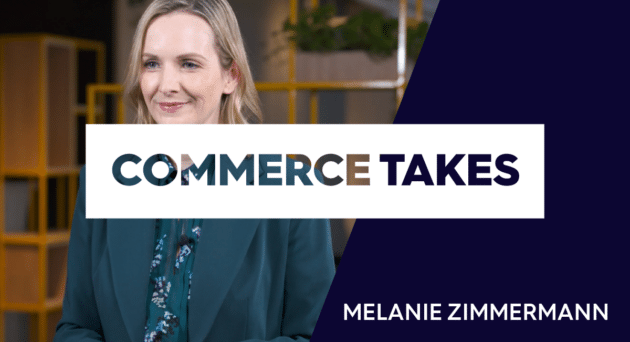The Google Shopping network continues to be an incredibly strong channel for marketers and retailers. However, as the platform has become more widely used, some common misconceptions have developed.
David Schwartz, VP, Sales & Account Strategy at Criteo and Kevin Wetherby, Shopping Commercial Lead at Google, recently hosted a webinar to break down and dispel the most popular myths out there. They provided insight into what marketers really need to know, and gave some recommendations that they can immediately implement into their Google Shopping campaigns.
Here are the five myths and the truths behind them:
Myth #1: Google shopping is only for online sales.
Truth #1: Online activity leads to in-store sales. Criteo data reveals that 64% of all in-store purchases in the U.S. are influenced by digital actions. Conversely, 1 out of every 3 mobile searches are based on location. There’s no denying that offline and online are converging more than ever before.
Myth #2: Online shopping starts on Amazon.
Truth #2: Consumers start their shopping journeys at different points around the web. Google has seen 162% growth in shoppers using its search engine when looking for products, and 13% of shoppers begin their search on retailers’ own sites. Retailers’ strategies should consider that shoppers discover products at many different places across the web.
Myth #3: All products convert similarly on mobile.
Truth #3: Different products perform differently on mobile. There isn’t a one-stat-fits-all conversion rate for mobile, tablet, or desktop across product categories. Fashion and luxury items, such as clothing and shoes, tend to see higher conversions on mobile while some luxury items are still seeing higher rates on desktops.
Myth #4: Products should be segmented by category and brand.
Truth #4: As an advertiser, you must determine how to best partition your products. In many cases, other characteristics of the product, such as color, style, and price, also play a large role in shoppers’ search habits. Each product catalog is unique and retailers should look at their data to see what elements drive performance.
Myth #5: All users who complete the same action should have the same bid modifier.
Truth #5: Advertisers can create multi-dimensional remarketing lists that better align with user value. Two shoppers completing the same action on your site doesn’t necessarily mean they hold the same value. Retailers should use their data to understand the nuances of individual shopping journeys and tailor their strategies accordingly.
We cover each myth in much more detail in the webinar. Watch it in full here.
The overarching theme of these myths is that data is an ultra-powerful tool. The idea that there’s a “one-size-fits-all” way to set up a Google Shopping campaign for success is simply not true. The reality is that each product, category, and shopper is different. Marketers need to use performance data from their campaigns to continually test and refine to ensure maximum ROI.
The webinar featured a Q&A at the end, where the experts shared their specific Google Shopping tips and advice. Here are a few of the questions we covered.
Question: How do you recommend implementing mobile modifiers?
A: The most important aspect of implementing mobile modifiers is granularity, and that varies between campaigns and organizations. But if you’re stuck on where to start, we’d recommend looking at the ad group level, and then depending on the product group and amount of traffic, observe its performance and modify as necessary.
Q: What apparel attributes should a retailer use when structuring their campaigns?
A: We’ve seen many apparel retailers use gender and brand for product attributes. That said, it’s very important to look at your KPIs as well as the data you’ve collected to decide what’s working for your specific products. For instance, you may have some products within your catalogue that you want to break out individually because they tend to sell well and you want to highlight them.
Q: For a company that sells commercial supplies, what are the options for a good structure between product type and brands?
A: You can focus on price point, product types, and maybe even breaking products out individually by SKU, as long as you have enough data to ensure you get a good conversion rate and ROI.
Q: What are the most important feed attributes for Google when it comes to showing a PLA ad?
A: We’d recommend focusing on UPC or your unique product identifier first. Then title and product type and finally, description. Google uses product type and the campaign set-up to help define what a product is within its system, so it’s important to set it up correctly. As the system uses machine learning to improve its algorithms, those variables become even more important.
Q: There are many different bid modifiers for Google Shopping. What recommendations do you have to ensure they’re working together?
A: Sometimes advertisers use many different modifiers, such as device, geo, audience, time and day of the week, and they’re often not all completely independent variables. We recommend really testing the elements you’re modifying for. For instance, some advertisers modify heavily on audience, but shoppers could share some of the same attributes and it can lead to overbidding. The key is testing to see what’s working and what isn’t through isolating the specific modifiers. It’s also a good idea to do audits from time to time to assess overall performance.
Q: For a company that sells apparel, furniture, and beauty products, should we have different campaign structures for each category?
A: The best answer is that it isn’t one-size-fits-all. We’d recommend using your data and structuring your campaigns around what is most highly correlated with performance.





















